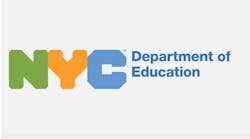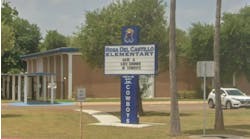For some administrators and planners, designing and building education facilities may sometimes seem like a circus act — trying to project a persona of competence and confidence while juggling dozens of issues. Meanwhile, the audience — students, staff members and taxpayers — watch and wait with anticipation in hopes of getting what they paid for and being delighted with the results.
To be successful, administrators and planners have to keep track of numerous factors: costs; curricular innovations; the latest upgrades in equipment and technology; the growing demands for heightened security; the duty to accommodate learners with different styles, personality types and abilities; the obligation to use resources wisely; and the desire to create a hub that brings a community together. The trick is getting across that high wire before the spotlight goes out or the crowd gets impatient, and trying to keep all those items aloft without letting any one of them — or the whole operation — come crashing down.
But, despite the obstacles, schools and universities across the nation continue to deliver education environments that are conducive to learning. Designers and educators have to address many concerns as they traverse the tightrope from planning stage to completed building. Following are 10 of the issues schools and universities are likely to confront as they plan and build the learning spaces that will educate future generations of schoolchildren:
- Cost
Money concerns permeate every education construction project, and administrators and architects have to take into account changing financial conditions and be sensitive to taxpayers skeptical of public officials continually coming back to voters for more.
Because many of the bond proposals that go before voters are five-year plans or longer, the cost estimates put forth to voters sometimes are outdated when it comes time to begin moving dirt. In other cases, unanticipated problems with a site can throw cost projections out of whack. Economic factors out of the control of local educators — such as spiraling oil costs and a shortage of qualified construction workers — can ruin the most meticulously considered budgets.
Earlier this year, the Poway (Calif.) district decided to put a $179 million bond proposal on the ballot in 2008. It needs the money to be able to finish renovation projects that were supposed to be covered in a $198 million bond issue approved by voters in 2002.
- Security
For years, education professionals have known that keeping campuses safe is a top priority — and that the potential dangers that schools and universities face can come unexpectedly from any direction. In the past year, the deadly shooting spree on the Virginia Tech campus in Blacksburg reminded education institutions again of the devastation that can result when a troubled student gets access to guns. Seung-Hui Cho, a student at Virginia Tech, killed 32 people on campus before taking his own life.
In the aftermath of the carnage and the grieving, educators at Virginia Tech and across the country examined the incident to see what lessons they could learn that might help them avoid a recurrence of the horrific violence. The focus following the shooting was on establishing ways for schools to overcome privacy barriers and gain access to mental-health information about students who might be a danger to themselves or others.
Security officials also looked into ways that students, staff and the general public could be notified more quickly and accurately about ongoing crises or dangers. Many institutions have expanded emergency-notification systems to provide more ways for those who work or study on a campus to receive alerts. Such systems enable a user to receive notification of an emergency via e-mail, text messaging, voice mail (on both cell phones and landlines), public message boards or intercom announcements.
As schools add security features such as surveillance cameras, metal detectors and access-control systems, administrators should be aware of creating a balance between creating a safe environment and one that is oppressive. Programs that try to make personal connections with students and identify signs of trouble before they mushroom into a crisis can be an effective complement to equipment-based security solutions.
Campus security also can be strengthened through the concepts of Crime Prevention Through Environmental Design (CPTED) — natural surveillance, natural access control and territoriality.
- Technology
The nearly universal availability of computers and the Internet in schools has transformed how students learn and how education institutions operate. If the past is any predictor, technology will continue to get faster and cheaper, and enable institutions to accomplish tasks that today may seem too difficult.
Schools and universities have to plan their facilities to accommodate the technology that students now expect to be available as a matter of course. As the technology improves, administrators must be prepared to adjust. Just a few years after schools began providing Internet connections routinely in classrooms and libraries via desktop computers, students and faculty now have become accustomed to the freedom and mobility of laptop machines and wireless access.
Technology also enables education institutions to eliminate the barriers of distance and connect with students on the other side of the world just as easily as they can with those across town. On the administrative side, technology enables schools and universities to acquire materials and equipment more efficiently, to monitor maintenance and energy more closely, and to assess their facility needs more accurately.
Administrators need to devote enough resources to keeping their faculty and staff trained in technological advancements so that facilities can operate efficiently and help deliver an effective education to students.
- Maintenance
Because of inadequate or deferred maintenance, many schools and universities have seen their facilities deteriorate prematurely. Many administrators and educators have learned their lessons and realize the importance of a thorough operations and maintenance program.
“A well-thought-out, well-executed O&M program can provide huge savings in equipment and energy costs,” says the U.S. Department of Energy's EnergySmart Schools program.
The department says a comprehensive maintenance program should keep track of HVAC systems and equipment; indoor air quality (IAQ) systems and equipment; cleaning equipment and products; materials; plumbing fixtures and systems; recycling and waste systems; and landscape maintenance.
Because maintenance concerns almost always will take a back seat to academic issues, schools and universities will continue to struggle to acquire enough funding for their maintenance departments. But experts say that with proper training and planning, education institutions can carry out an effective maintenance program.
“Active and continuing support by senior administrators, as well as staff training and motivation, is critical to the success of energy-efficient O&M management efforts,” says the U.S. Department of Energy's School Operations and Maintenance: Best Practices for Controlling Energy Costs.
- Health
School buildings are where students spend most of their waking hours, and educators and administrators have to be concerned not only with whether students are learning, but also with whether they are staying healthy. A facility that is too hot or too cold, or that causes students or teachers to get sick, can make the learning process difficult, if not impossible.
Schools need to make sure that their buildings have good indoor air quality; that their ventilation systems provide adequate amounts of fresh air; that humidity levels are monitored and moisture is controlled to prevent the growth of potentially hazardous mold; and that the heating and cooling equipment maintain the appropriate temperature throughout a facility so students can learn without distraction or discomfort.
Health advocates have been focusing attention on another aspect of school life: eating. Concern about overweight children has led state and federal agencies, as well as nutrition advocates, to bring about a change in what students are eating from school lunchrooms and vending machines.
Schools have had to overhaul their menus and in some cases, kitchen equipment, to offer fewer items that are fried and fat-laden, and replace them with more vegetables, fruits and whole-grain products. Vending machines that once offered only sugary soft drinks now are more likely to have fruit juices or bottled water.
- Energy efficiency
As the green movement becomes more prevalent in construction and design, education institutions will continue to seek ways to have their facilities use energy more efficiently. The federal government estimates that school districts spend $6 billion a year on energy. Schools that can reduce their consumption may be able to redirect those savings into more classroom instruction.
Designs that include skylights, light monitors and clerestory windows enable school facilities to lessen their reliance on electric lights and take advantage of daylight. Low-e glazing enables schools to gain many of the benefits of windows (natural light) without sacrificing heat loss during the winter or heat gain in the summer. Reflective roofs and adequate insulation also help schools keep unwanted heat and cold from entering a facility.
Schools and universities that can't afford to purchase system upgrades that boost energy efficiency can enter into performance contracts with energy service companies. The companies pay the upfront costs of new equipment and help schools carry out energy-saving strategies. In return, education institutions pay for the upgrades with the cost savings the more-efficient systems provide.
- Impact on learning
For years, many school administrators and the people that designed and built their facilities paid little heed to how those spaces affected student performance.
Classrooms where students strain to hear their lessons because of poor acoustics, where glare from sunlight makes it hard to see, where noise from heating equipment or outside traffic drowns out the teacher, where fluctuating temperatures have students focused on their own discomfort instead of their assignments, where lack of fresh air triggers yawning or asthma episodes, where wornout desks and inflexible seats have students fidgeting in an attempt to get comfortable — all these examples are evidence that the facility conditions can hinder a student's ability to learn.
The good news is the flip side: Improving those conditions can remove many of the roadblocks to a high-quality education and give students a chance to learn without distractions. Schools can install quieter equipment or situate it where the noise does not penetrate classrooms. They can choose designs that admit diffused daylight into educational spaces while deflecting direct rays. They can opt for wider hallways that defuse the tension that can result from too many students trying to pass through a confined space too quickly. They can include gathering areas where students can socialize and develop a connection with the school community. They can choose materials and cleaning supplies that do not emit potentially hazardous gases into a school.
- Center of community
School districts have recognized, or remembered, that they are an integral part of the community that surrounds them. Similarly, many universities have tried to defuse town-gown conflicts and work with adjacent neighborhoods to ensure that the school and the people who live nearby can thrive. Such cooperation enables communities to use their resources more efficiently and creates more widespread support for the school's mission.
A school can form a bond with its community by allowing and encouraging facility use after school and on weekends. Sometimes, formal joint-use arrangements bring about sharing of libraries, computer labs, auditoriums and recreational space. Some campuses may include health clinics or social-service offices.
Schools now routinely design facilities to allow the community easy access to joint-use areas while keeping other parts — classrooms and sensitive areas — secure from outsiders.
- Flexibility
Education has changed significantly, and no doubt more changes are in the offing, so schools and universities cannot afford to build facilities that won't be able to adjust. Administrators need to focus on making their learning spaces flexible, not only to accommodate what learning will look like in the future, but also to deal with the different ways in which learning occurs in today's classrooms.
An ideal campus would have separate spaces to house a gymnasium, an auditorium or performing-arts space, a cafeteria, and a library or media center. But with limited budgets, schools and universities can't afford to provide discrete spaces for the varying educational wants and needs of students and faculty.
Spaces that can be divided or enlarged quickly allow schools to accommodate different activities more efficiently. Mobile equipment — tables and chairs that can be deployed where needed or cleared away to create open space — enable schools to carry out varied lessons in the same space. School officials trying to save on construction costs and limit the footprint of a new facility can use areas more efficiently by designing them to perform multiple roles.
- Size
In their search for ways to improve struggling schools, many reformers have embraced the small-schools movement. Having observed students in large schools fall through the cracks, school officials believe that in a setting of 400 students instead of 2,000, students more easily form the personal connections with one another and with teachers that create an atmosphere conducive to learning. Some studies have indicated that more personalized learning environments can boost student achievement.
Money from groups such as the Bill & Melinda Gates Foundation, which began supporting the small-school movement in the late 1990s, has spurred the growth of small schools, especially in urban districts such as New York City and Chicago.
Small schools can be housed in a facility by themselves, or they can share space in a building reconfigured to house several autonomous small schools. In some cases, districts may choose to have a school remain as one entity, but create schools-within-schools that divide students into more manageable groups based on grade level or subject matter.
Kennedy, staff writer, can be reached at [email protected].
The short list of facility concerns
- Cost.
- Security.
- Technology.
- Maintenance.
- Health.
- Energy efficiency.
- Impact on learning.
- Center of community.
- Flexibility.
- Size.




